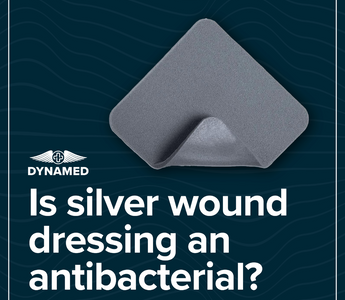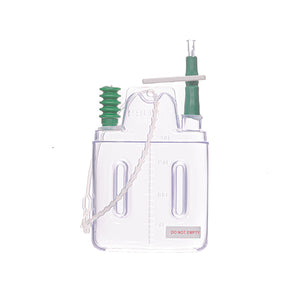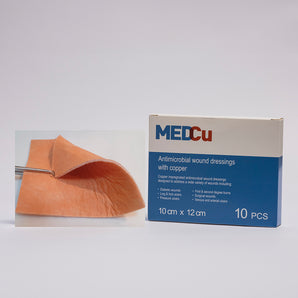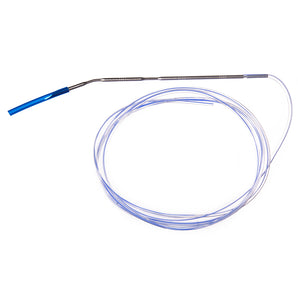Key Takeaways
- Silver wound dressings are highly effective in combating bacteria and fungi, making them valuable for infection control in wound care.
- Silver ions released by these dressings attack bacterial cell membranes, inhibit replication, and promote a cleaner wound environment.
- These dressings are ideal for managing complex wounds like diabetic ulcers, burns, and post-surgical wounds due to their antimicrobial and healing properties.
- They help maintain a moist environment, reduce bacterial load, and minimise pain and inflammation for quicker and more effective healing.
- Potential limitations include skin irritation, rare allergic reactions, and the possibility of microbial resistance with prolonged or unnecessary use.
- Compared to traditional dressings, silver wound dressings provide superior infection control but may have higher costs, with benefits outweighing the investment in critical cases.
Wound care plays a crucial role in preventing infections and ensuring proper healing, especially for high-risk or chronic wounds. Among the many options available, silver wound dressings have gained attention for their antimicrobial properties. But are they truly antibacterial, and how do they work to protect wounds from harmful pathogens?
Silver wound dressings release silver ions, which are known to combat a wide range of bacteria and fungi. This makes them particularly effective in managing infected wounds or those at risk of infection, such as diabetic foot ulcers, pressure ulcers, and post-surgical wounds. By maintaining a moist environment and reducing bacterial load, these dressings not only promote faster healing but also help minimise pain and inflammation.
Understanding the antibacterial capabilities of silver wound dressings can guide us in making informed decisions for effective wound management, improving outcomes for patients in various healthcare settings.
Understanding Silver Wound Dressings
Silver wound dressings, an essential tool in wound care, are widely recognised for their antimicrobial properties and benefits in managing infections effectively. These dressings are commonly used in healthcare settings to promote faster healing and protect against bacterial infections.
What Are Silver Wound Dressings?
Silver wound dressings are advanced medical products infused with silver ions. These dressings are highly effective in treating chronic and acute wounds, such as pressure ulcers, diabetic foot ulcers, venous ulcers, burns, and post-surgical wounds. The silver content provides broad-spectrum antimicrobial protection, targeting bacteria, fungi, and other harmful pathogens. By maintaining a moist environment, these dressings enhance granulation and tissue repair.
Silver dressing for wound care offers significant benefits for patients with infected wounds, especially in cases where standard approaches may not suffice. They are versatile, adaptable for various wound types, and available in multiple forms, including foam dressings. Healthcare providers often rely on silver wound dressing solutions to achieve effective healing outcomes.
How Do Silver Wound Dressings Work?
Silver wound dressings work by releasing silver ions onto the wound bed. The silver ions disrupt bacterial cell membranes, inhibit cellular respiration, and prevent DNA replication within harmful organisms. This process reduces bacterial load, minimising the risk of infection and encouraging wound cleanliness.
The foam layer in certain silver dressings absorbs exudate, regulating moisture and preventing maceration. These features also help reduce inflammation and create an optimal environment for tissue regeneration. However, these dressings are not suited for dry or minimally exudating wounds, as their primary function includes managing excess moisture.
Dynamed Pharmaceuticals provides exceptional silver dressing options designed to offer continuous antimicrobial protection, ensuring superior patient care and reliable outcomes.
Antibacterial Properties Of Silver
Silver wound dressings are celebrated for their potent antibacterial action, making them a vital asset in wound care management. These dressings actively combat a broad spectrum of harmful microorganisms, preventing infections and promoting cleaner wound environments.
Mechanism Of Action
Silver ions in the dressing disrupt the structure and functions of bacterial cells. They attach to bacterial cell membranes, increasing permeability and causing leakage of critical ions. Inside the cell, they bind with proteins and DNA, halting vital processes such as replication and metabolism. This dual action damages bacteria effectively, reducing their ability to proliferate in the wound.
Efficacy Against Different Bacteria
Silver dressings showcase efficacy against diverse bacterial strains, including drug-resistant pathogens. For example, they combat Staphylococcus aureus (including MRSA), Pseudomonas aeruginosa, and Escherichia coli. These bacteria often infect chronic wounds like diabetic foot ulcers, making silver dressing for wound care essential for infection control. Additionally, its antifungal properties protect against fungal infections, offering comprehensive microbial coverage.
By leveraging the unique antibacterial properties of silver, we ensure advanced wound management. Ultimately, this approach lowers infection risks and supports faster, more effective healing.
Benefits Of Silver Wound Dressings
Silver wound dressings offer significant advantages in modern wound care, benefiting healthcare providers and patients. They combine antimicrobial protection, effective exudate management, and healing-promoting conditions, making them essential tools for managing chronic and acute wounds.
Reducing Infection Risk
Silver ions in these dressings provide broad-spectrum antimicrobial activity, effectively combating harmful bacteria, fungi, and drug-resistant pathogens. These include strains like MRSA (Methicillin-resistant Staphylococcus aureus) and Pseudomonas aeruginosa, which are common in chronic or infected wounds. By disrupting bacterial cell membranes and halting replication processes, silver dressing for wound care reduces the risk of infection significantly. This advanced mechanism ensures a cleaner wound environment, preventing complications and supporting better outcomes.
Promoting Healing
Maintaining an optimal condition for healing, silver wound dressings support faster recovery. They're designed to create a moist wound environment, essential for granulation and tissue repair, while preventing maceration caused by excess exudate. Additionally, silver’s anti-inflammatory properties help minimise pain and reduce local irritation. These features make silver dressings suitable for various wound types, including venous ulcers, pressure ulcers, burns, and post-surgical wounds.
Our silver dressing solutions, developed with precision, ensure effective care for complex wound scenarios.
Limitations And Concerns
While silver wound dressings offer numerous benefits, they present some limitations and concerns regarding their usage in wound care management.
Possible Side Effects
Patients may experience skin irritation or discolouration when silver dressings are used, especially on sensitive skin. Conditions like localised burning, stinging, or redness can occur, though these reactions are typically mild and temporary. In rare cases, prolonged use of silver dressings might result in argyria, a condition where skin develops a bluish-grey tint due to silver particle deposits.
Allergic reactions, while uncommon, may arise in individuals with metal allergies. Monitoring by healthcare professionals is advised to reduce risk, particularly when utilising advanced products like those offered by DynaMed Pharmaceuticals. Ensuring proper assessment of the wound type and patient history helps mitigate such concerns.
Resistance Development
Widespread use of silver dressings can contribute to microbial resistance over time. Research indicates that some bacterial strains may adapt and develop reduced silver sensitivity, undermining the efficacy of silver-based products. This risk is heightened when silver is applied unnecessarily or over prolonged durations.
To combat resistance concerns, we recommend integrating silver dressing for wound care into a comprehensive wound management plan that includes proper diagnosis, monitoring, and adherence to evidence-based guidelines. Limiting usage to infected or high-risk wounds ensures that the antimicrobial properties of silver are preserved for critical cases.
Comparing Silver Wound Dressings To Other Options
Silver wound dressings are a vital part of modern wound management, offering unique properties that address infection risks while supporting effective healing. Here's a closer look at how they compare to traditional options and their cost and accessibility.
Silver Vs Traditional Dressings
Traditional dressings, such as gauze and non-impregnated foam, provide basic wound coverage and absorb minor exudate. However, they lack antimicrobial properties, limiting their effectiveness against infection. By contrast, silver dressings for wound care release silver ions, which combat bacteria, fungi, and drug-resistant pathogens like MRSA. This action reduces bacterial load and promotes a cleaner wound environment.
Silver wound dressings also maintain a moist wound environment, which enhances granulation tissue formation. Traditional dressings often dry out wounds, leading to potential tissue damage during removal. The advanced technology in silver dressing minimizes pain and supports better recovery conditions for infected or high-risk wounds compared to standard gauze.
For chronic wounds like diabetic foot ulcers and venous ulcers, traditional dressings may require frequent changes, disrupting healing. In contrast, silver foam dressings can remain in place for several days, effectively managing exudate while providing continuous antimicrobial protection. This durable effectiveness makes silver wound dressings a practical choice for healthcare providers and patients alike.
Cost And Accessibility
Silver wound dressing costs are generally higher than basic dressings due to their incorporated antimicrobial technology. Despite this, the reduced need for frequent changes and the prevention of infection-related complications can make them a cost-effective option for managing complex wounds in the long run.
Accessibility may vary by region, with urban healthcare facilities often stocking advanced wound care products like those offered by Dynamed Pharmaceuticals. However, affordability and availability can challenge rural or under-resourced areas. Efforts to distribute these innovative dressings across broader markets ensure more patients benefit from superior wound care solutions.
By integrating both affordability and advanced wound care technologies, we strive to expand access to quality wound management products, addressing the diverse needs of healthcare providers and patients across Africa.
Final Thoughts
Silver wound dressings have revolutionised modern wound care by offering powerful antibacterial and antifungal protection while promoting optimal healing conditions. Their ability to combat drug-resistant bacteria and manage chronic or infected wounds makes them an invaluable tool for both patients and healthcare providers.
Despite their benefits, careful use is essential to minimise potential side effects and prevent microbial resistance. By integrating silver dressings into comprehensive care plans, we can effectively treat high-risk wounds while prioritising patient safety and recovery.
Enhance Your Wound Care Protocol with Procedure Packs
As silver dressings excel in combating infections and promoting faster healing, pairing them with ready-to-use procedure packs ensures streamlined care delivery. Our procedure packs include everything from wound prep tools to dressing aids, perfectly complementing antimicrobial dressings by simplifying sterile technique and reducing the risk of contamination. Explore our comprehensive range here 👉 procedure packs
Visit Dynamed Pharmaceuticals
Phone: 0861 00 00 43
Website: dynamed.co.za
Email (Sales): sales@dynamed.co.za
Email (Info): info@dynamed.co.za
Google Maps: Find us here
Frequently Asked Questions
What are silver wound dressings?
Silver wound dressings are advanced medical products infused with silver ions, providing broad-spectrum antimicrobial protection against bacteria and fungi. They maintain a moist wound environment and actively promote healing by reducing bacterial load, making them suitable for chronic and infected wounds like diabetic ulcers, burns, and post-surgical wounds.
How do silver wound dressings work?
Silver ions in these dressings disrupt bacterial cell membranes, inhibit cellular functions like replication and metabolism, and increase cell permeability. This mechanism effectively combats bacteria and fungi, including drug-resistant strains, preventing infections and promoting a cleaner wound environment.
Are silver wound dressings suitable for all wound types?
No, silver wound dressings are ideal for infected or high-risk wounds with moderate to heavy exudate, such as chronic ulcers or surgical wounds. They are not recommended for dry or minimally exudating wounds due to their moisture-retaining properties.
What are the benefits of silver wound dressings?
Silver dressings provide antimicrobial protection, enhance healing, manage exudate, and reduce complications like infections. Their anti-inflammatory properties help minimise pain and irritation. They require fewer changes, making them effective for long-term use on severe or chronic wounds.
Can silver wound dressings cause side effects?
Possible side effects include mild skin irritation, discolouration, or temporary burning sensations. In rare cases, prolonged use may lead to argyria, a bluish-grey skin tint. Individuals with metal allergies may experience allergic reactions, requiring careful monitoring by a healthcare provider.
Are there risks of bacterial resistance with silver wound dressings?
Yes, improper or excessive use of silver dressings may contribute to bacterial resistance, reducing their effectiveness over time. It’s essential to follow medical guidance and use these dressings only for infected or high-risk wounds as part of a comprehensive care plan.
How do silver dressings compare to traditional wound dressings?
Unlike traditional dressings, which provide basic coverage, silver dressings actively combat infections and support faster healing by maintaining a moist environment. They also require less frequent changes, making them more efficient for chronic and high-risk wounds.
Are silver wound dressings expensive?
Silver dressings are generally more costly due to their advanced technology. However, they are cost-effective long-term as they reduce complications, prevent infections, and minimise the frequency of dressing changes, saving on overall treatment costs.
Can silver dressings be reused?
No, silver wound dressings are designed for single use only. Reusing them may compromise their sterility, antimicrobial effectiveness, and wound healing outcomes.
Who should use silver wound dressings?
Silver wound dressings are suitable for patients with infected, chronic, or high-risk wounds, such as diabetic ulcers, burns, and post-surgical wounds. They should only be used under the guidance of a healthcare professional for optimal results.






